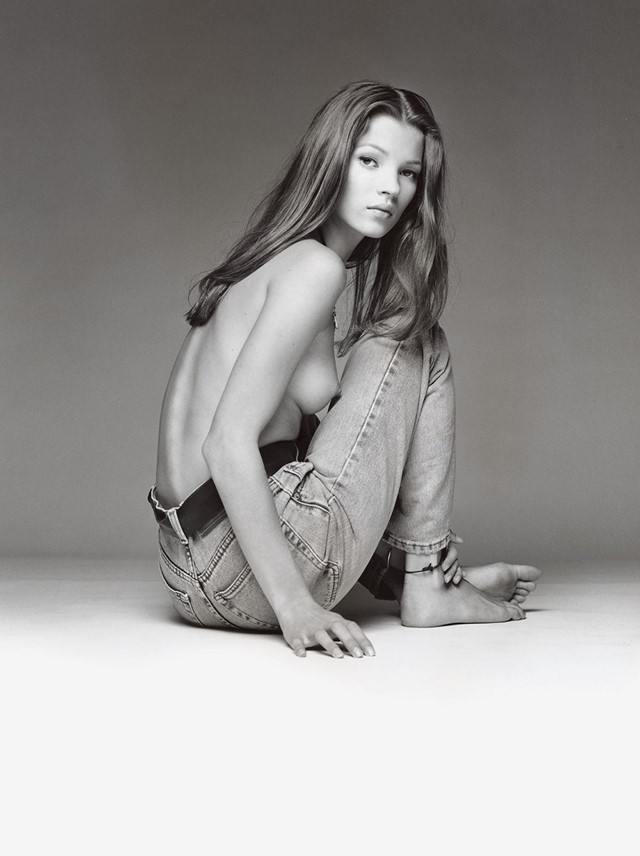From a baby-faced Kate Moss for Calvin Klein to an ecstatic Sophie Dahl for YSL Opium, we reflect on some of fashion's most influential ads
The power of the fashion advertising campaign is not to be underestimated. While we may often leaf past them idly while thumbing through a magazine, there are some campaigns that have had a more serious impact over the years. Certain images are destined to define a particular mood, or to reflect a new idea, in a way that only truly iconic pictures could do, thanks to the creativity of some of the world’s most talented fashion insiders. Delve back through style history with us as we revisit seven of the most influential fashion campaigns.
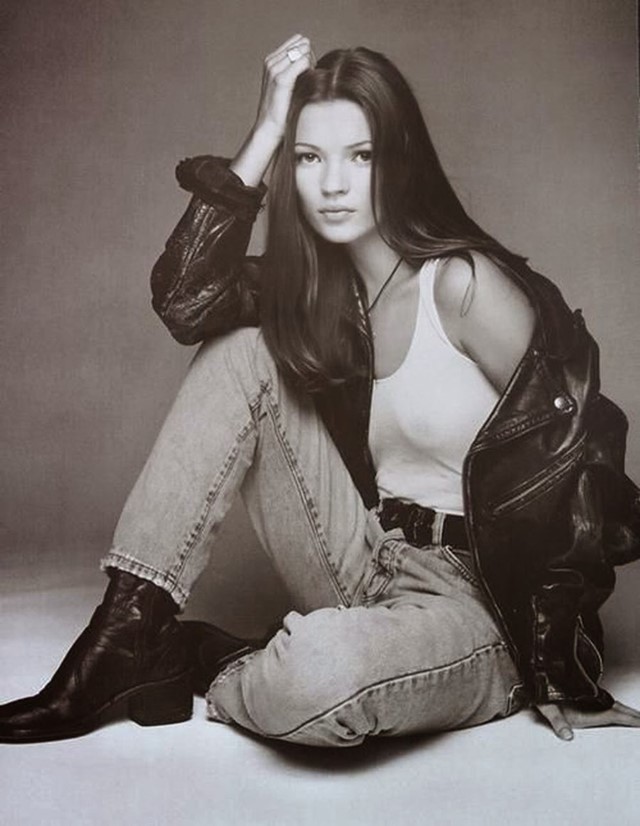
Kate Moss and Patrick Demarchelier for Calvin Klein, 1992
Patrick Demarchelier’s first campaign for Calvin Klein, after Bruce Weber’s long tenure shooting for the brand, would be an important debut. But the job only fell to Kate Moss after Klein’s first choice, Vanessa Paradis, turned it down. So it became Kate’s ticket to stardom, beginning a long and illustrious career that included eight years working with Klein.
Before Kate Moss was the cultural icon we feel so connected to now, she was the gamine, bare-faced teenager that stares out from the black-and-white ads, with coltish limbs in denim and leather and a kind of naïve beauty that stood out in a time of buxom, bombastic supermodels. It ensured that a Calvin Klein current that would run right throughout the 1990s, encompassing the aloof, austere good looks of Carolyn Bessette Kennedy and Gwyneth Paltrow en route.
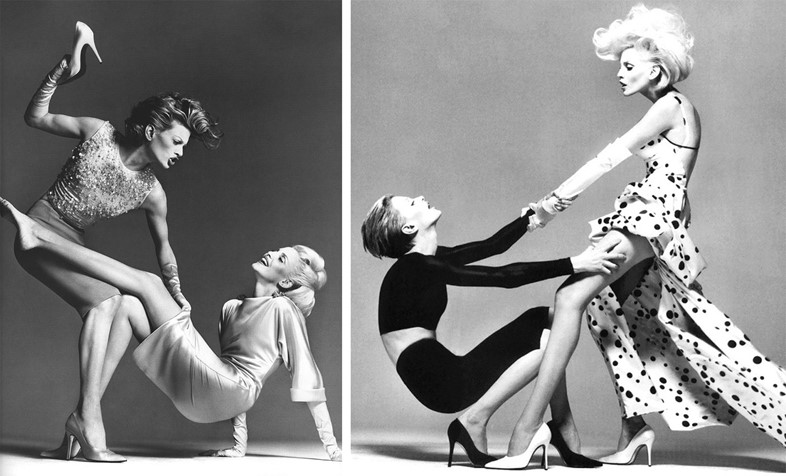
Kristen McMenamy, Nadja Auermann and Richard Avedon for Versace S/S95
It was a dream team of fashion personalities essential to the era: Richard Avedon behind the camera and Carlyne Cerf de Dudzeele styling two of the reigning supermodels of the 1990s, Nadja Auermann and Kristen McMenamy. The campaign, titled ‘Two Tall Women’, was shot towards the end of Avedon’s influential career, spanning almost 60 years. During that career he was noted for his projection of his subjects’ personalities, and in ‘Two Tall Women’ those personalities are depicted via Auermann and McMenamy’s strong, toned bodies in movement – the tall women embrace and fight, comfort and seduce each other in elaborate dresses and high heels, lined up perfectly to display the product.
“I considered it the most inspired shoot that I’d done,” McMenamy later told Nick Knight in an interview. “Only because it all worked. There was something about the chemistry with Nadja and me and Dick… It was one of those shoots that you could say was on fire.” Never had female strength seemed so dynamic, so in sync between two bodies as it had with McMenamy and Auermann.
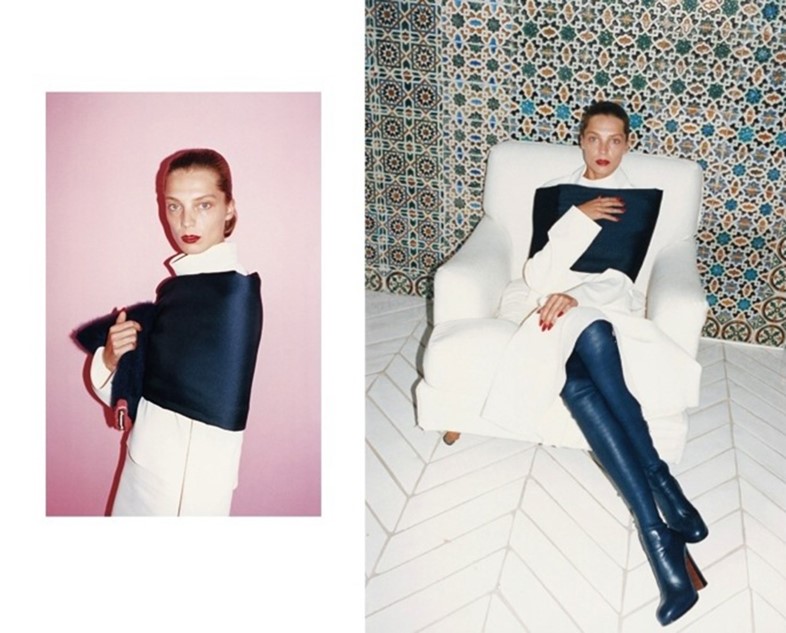
Daria Werbowy and Juergen Teller for Céline A/W13
Phoebe Philo’s tenure at the reins of Céline marked a new era of simple elegance and luxurious sophistication, and Juergen Teller’s campaigns, featuring a floodlit, sometimes startled-looking Daria Werbowy played a key part in that. Yet by the team’s fourth outing, for Autumn/Winter 2013, the connection between the dream team was honed to perfection, and the campaigns began to feel like a joke that we were all allowed in on. Werbowy, with her lively resemblance to Philo herself, is now less gamine and more mature, dressed in laundry bag prints and cream bouclé, flared silhouettes and with a clutch bag held tightly to her chest. She poses against Moroccan tiles and walls painted Pepto Bismol pink. Where another house might plump for retouching and airbrushing to make Werbowy into a youthful cipher for the brand, a fanciful fashion stereotype, the house of Céline uses Werbowy as she is; enigmatic and substantial on her own terms. The images that followed are real, raw and unretouched, an excavation of all that is considered traditionally sexy or sophisticated in the world of fashion.
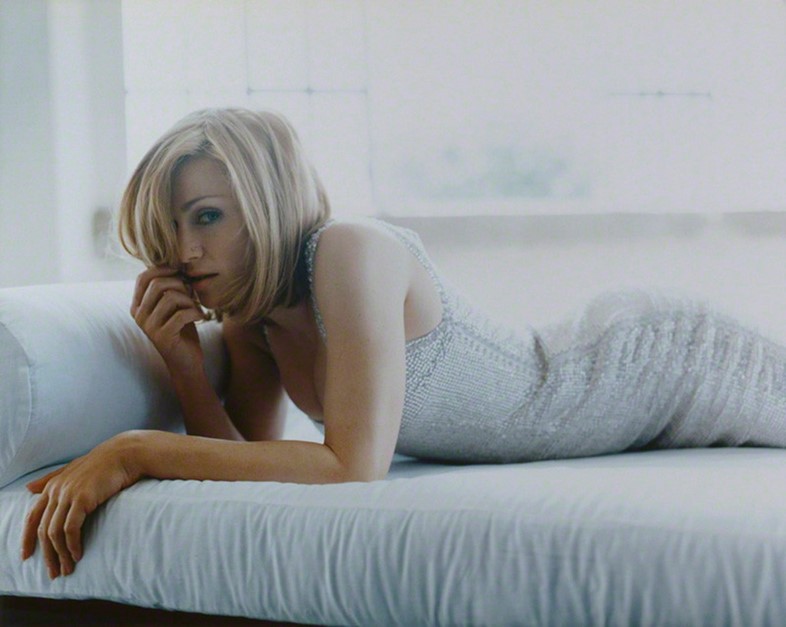
Madonna and Mario Testino for Versace A/W95
For Madonna’s second campaign for Atelier Versace, she requested to be shot by Mario Testino, and was the first major celebrity to do so. As an entry point to a certain echelon of celebrity portraiture, the campaign would become one of his most memorable shoots to date. In the images, Madonna, who had been steadily softening her public persona at the time, appears with a graceful, girl-next-door charm more familiar from Hollywood starlets than pop provocateurs. She wears a series of pristine pale dresses and appears off-guard, unfiltered, and relaxed. It is a side of Madonna that the public mightn’t have been so familiar with at the time, but it foreshadowed what we would later learn about the star: it is within her chameleon-like mutability that her true magnetism resides. One shot, in which she lies on a daybed in an embellished silver dress, peering out from behind her hair, was later purchased by the National Portrait Gallery for its collection.
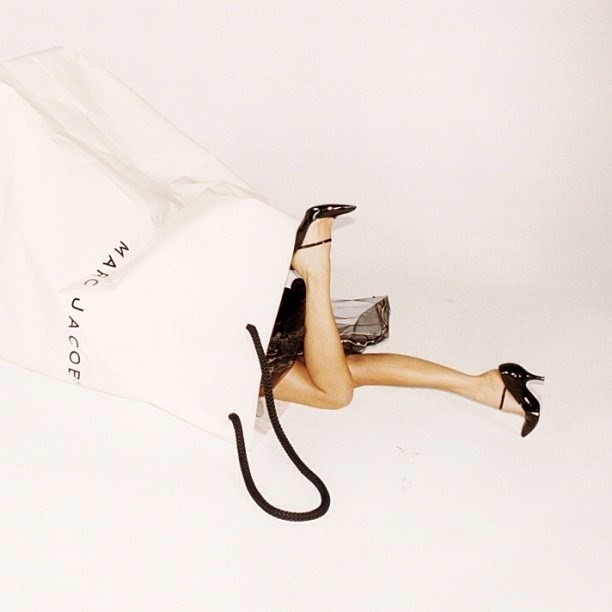
Victoria Beckham and Juergen Teller for Marc Jacobs S/S08
The relationship between Juergen Teller and Marc Jacobs was one of the sturdiest in fashion photography, with the former shooting the likes of Helena Bonham Carter and Sofia Coppola in his signature raw style during their long 13-year partnership. But for Spring/Summer 2008, the pair decided to shoot Victoria Beckham, in what would become a historic moment for all three participants. At the time Beckham was one of the most famous, most paparazzied women on the planet, with the ability to make anything she wore sell out at a rapid pace. The twist came with the issue of her fashion credibility in 2008 – she had yet to launch her fashion label and was more associated with tight Roland Mouret dresses and fake tan than Marc Jacobs and his downtown brand of fashion. It was Teller’s idea to invert that notion, depicting Beckham herself as the product, by placing her inside a giant Marc Jacobs carrier bag. One of the ads that resulted featured Beckham’s bare, tanned legs sticking crab-like out of the bag, clad in black high heels; others saw her crawling out of it, or posing at an angle like a slightly manic ballerina. Many wondered how much of this was satire, whether Jacobs and Teller were poking fun at Beckham’s reputation, but in the years since we’ve seen the emergence of a savvy, smart Victoria Beckham who is clearly always in on the joke.
![Diapositiva34[2]](https://images-prod.anothermag.com/786/azure/another-prod/340/9/349323.JPG)
Sophie Dahl and Steven Meisel for YSL Opium, 2000
Shot by Steven Meisel and art directed by Tom Ford, the then-creative director of Yves Saint Laurent, Sophie Dahl’s 2000 ad for Opium triggered a controversy like no other. To the trained eye, her languid pose may have echoed another Opium ad from 1977, where Jerry Hall reclines spread-eagled (though fully clothed) in a state of bliss on an opulent couch, shot by Helmut Newton. But the public didn’t notice the art of such nuance: instead Dahl’s supine and naked frame, head thrown back in quivering ecstasy, generated 730 complaints to the UK’s Advertising Standards Authority, leading to it being withdrawn by the watchdog. In her book Backlash, feminist writer Susan Faludi noted that the 1977 ad’s original pose brings the visual concept of the “weak and yielding woman” to its logical conclusion: the female corpse, as she wrote, “a woman was stretch out as if on a bier, her eyes sealed shut, a funereal floral arrangement by her ashen face.” While Tom Ford and Steven Meisel took this concept to an extreme, the message of the campaign remains clear: this is a scent is so alluring, so luxurious and so heady that it could be more than a little dangerous.
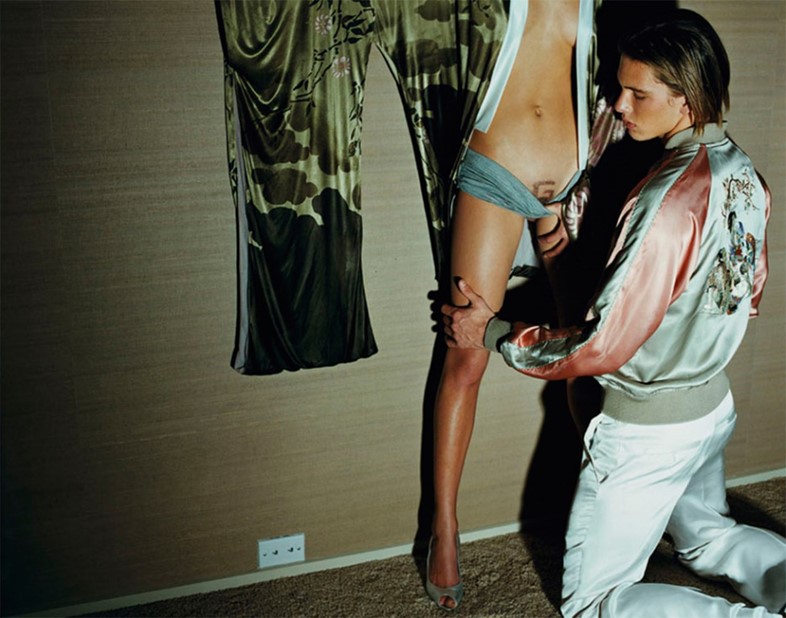
Louise Pedersen and Mario Testino for Gucci S/S03
Never one to shy away from a scandal, Tom Ford again turned heads with his Gucci campaign for Spring 2003, styled by Carine Roitfeld and shot by Mario Testino, in which Louise Pedersen pulls down her blue knickers to reveal a Gucci G manicured carefully into her pubic hair. Ford later maintained in an interview with Tina Brown that he was personally responsible for the manicuring on set. “Why? Because we like to do things, we like to be in control,” he explained. “I even had to fill it in with an eyebrow pencil so that we could read it on camera.”
The ad, nicknamed Public Enemy by Testino, narrowly escaped being banned in the UK. It plays not only with the idea that sex can sell, but also puts forward the importance of branding and control in the world of Ford’s Gucci. He intended that the ad be taken with some humour, as a sideways comment on the ubiquity of branding at the time. However, Ford would leave Gucci the following year, selling his stake in the company and citing a lack of creative license as his reason for leaving. But the ad had already worked its scandalous magic: everyone knew what Tom Ford was really about and what exactly he was capable of.
